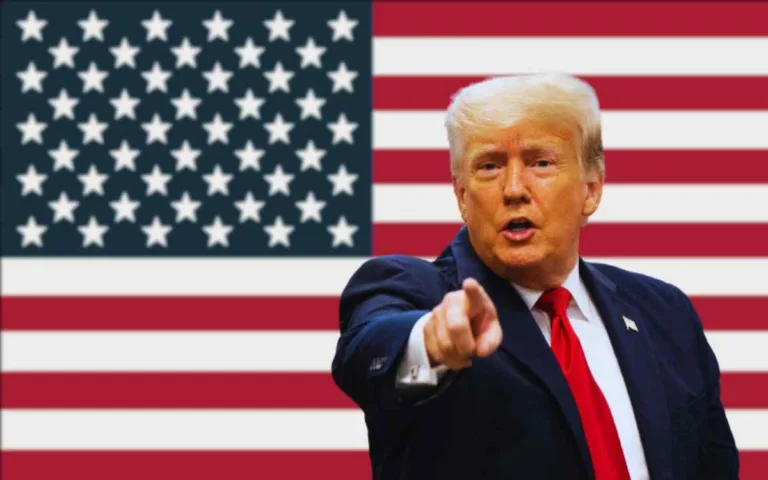Big 3 Automakers in Panic as UAW Strikes!
In a historic move, the United Auto Workers (UAW) initiated a widespread strike known as the “Stand Up Strike” late Thursday, simultaneously targeting Big 3 Detroit automakers: Ford Motor Co., General Motors (GM), and Stellantis (formerly Fiat Chrysler).
This strike comes after contract negotiations failed to yield a new agreement, leading to UAW members walking off the job at key assembly plants across Michigan, Ohio, and Missouri.

>>>Find more about the offer and counter offer during the negotiations earlier this month.
Here’s a closer look at the situation and its potential implications.
Wave of Strikes Begins
At the stroke of midnight, UAW members at assembly plants in Michigan, Ohio, and Missouri took to the picket lines, marking the onset of the “Stand Up Strike.”
The primary goal of this strategic strike is to exert pressure on specific plants crucial to Ford, GM, and Stellantis, thereby disrupting production without causing a company-wide paralysis.
The initial targets include the Ford Michigan Assembly Plant (Final Assembly and Paint only) in Wayne, Michigan, the Stellantis Toledo Assembly Complex in Ohio, and General Motors Wentzville Assembly in Missouri.
UAW’s Bold Strategy
Union leaders have adopted a multi-wave strategy, whereby they plan to select additional target plants if negotiations continue to falter.
This approach is designed to keep the automakers off balance, providing the UAW with maximum leverage to secure more favorable contracts than what has been offered thus far.
UAW President Shawn Fain has stated, “Everything is on the table,” emphasizing their commitment to achieving better terms for their members.
Automakers Express Disappointment
In response to the strike action, automakers have expressed their disappointment.
General Motors, for instance, issued a statement highlighting their offer, which included significant wage increases and manufacturing commitments.
They pledged to continue negotiations in good faith while prioritizing the safety of their workforce.
Stellantis also expressed disappointment in the UAW’s actions and indicated their readiness to take necessary measures to protect their operations in North America.
Ford, on the other hand, has not yet commented on the strike.
The Potential for Escalation
While the initial strike targets specific assembly plants, the UAW has the option to escalate their actions.
Labor expert Harley Shaiken suggests that the union could target more “strategic” plants responsible for essential components like engines and transmissions.
This could further intensify the pressure on automakers by potentially causing supply chain disruptions and affecting workers at those plants.
Uncharted Waters
The current situation presents several possible paths for both the UAW and automakers.
Harley Shaiken notes that the union has multiple options to press their demands, but they are not the only actors in this scenario.

Automakers, too, could begin choosing strategic measures to protect their interests, creating uncertainty about the eventual outcome.
Significance of Initial Targets
The UAW’s choice of initial strike targets is notable because it affects one assembly plant at each of the three major automakers.
Labor expert Marick Masters believes that this action conveys the union’s determination to increase pressure for a better deal without cornering the companies by targeting critical component plants.
Ford’s Late-Night Bargaining
Ford engaged in last-minute bargaining with the UAW, presenting a substantive counterproposal just hours before the contract expiration.
The automaker emphasized the historic generosity of its previous offer, which included substantial wage increases, cost-of-living adjustments, and additional benefits.
However, the UAW’s counterproposal showed little movement from their initial demands, potentially leading to the strike.
GM’s Last-Minute Offer
GM’s CEO, Mary Barra, disclosed that the company had made a historic offer to the UAW with a 20% hourly wage increase over the contract’s duration.
This offer was an improvement over their previous proposal, and Barra stressed the company’s commitment to reaching an agreement to avoid the negative consequences of a strike.
UAW’s Demands

The UAW’s demands, as revealed by President Shawn Fain, include eliminating wage tiers, a substantial 40% wage increase over the contract’s duration, restoring cost-of-living allowances, securing a defined benefit pension for all workers, the right to strike over plant closures, reduced work hours, limitations on temporary workers, and increased benefits for current retirees.
Seeking a Settlement
To reach a tentative agreement that can be ratified by UAW members, the union seeks an offer that addresses critical issues such as wage increases, quicker progression to top-tier wages, and limitations on temporary workers.
The goal is to secure a settlement that rewards workers while maintaining the automakers’ ability to invest in the future.
Uncertain Future
The ongoing strike places both the UAW and automakers on a path fraught with uncertainty.
The UAW’s determination to secure better terms for its members, combined with the automakers’ efforts to protect their interests, makes the outcome of this standoff highly unpredictable.
As negotiations continue, the impact on the automotive industry and the broader economy remains a concern for all parties involved.
Latest Developments: No Closer to a Deal
In the latest development in the ongoing strike by the United Auto Workers (U.A.W.) against Detroit’s Big 3 automakers, there seems to be no progress towards reaching a deal.
The standoff continued on Sunday, with both sides holding their ground.
Stalemate Continues
Despite ongoing negotiations, the U.A.W. and the automakers are seemingly no closer to reaching an agreement than they were when the strike began on Friday.
U.A.W. President Shawn Fain warned in an interview with CBS’s “Face the Nation” on Sunday that if better offers are not made and the needs of the members are not met, they are prepared to escalate the situation.
A “No-Go” Offer
Stellantis, one of the Big 3 automakers, offered a 21 percent pay increase over four years.
However, Fain dismissed this offer as a “definite no-go.” The union continues to push for their demands, including a 40 percent wage increase over four years.
Stay tuned for more updates as this story continues to unfold.






